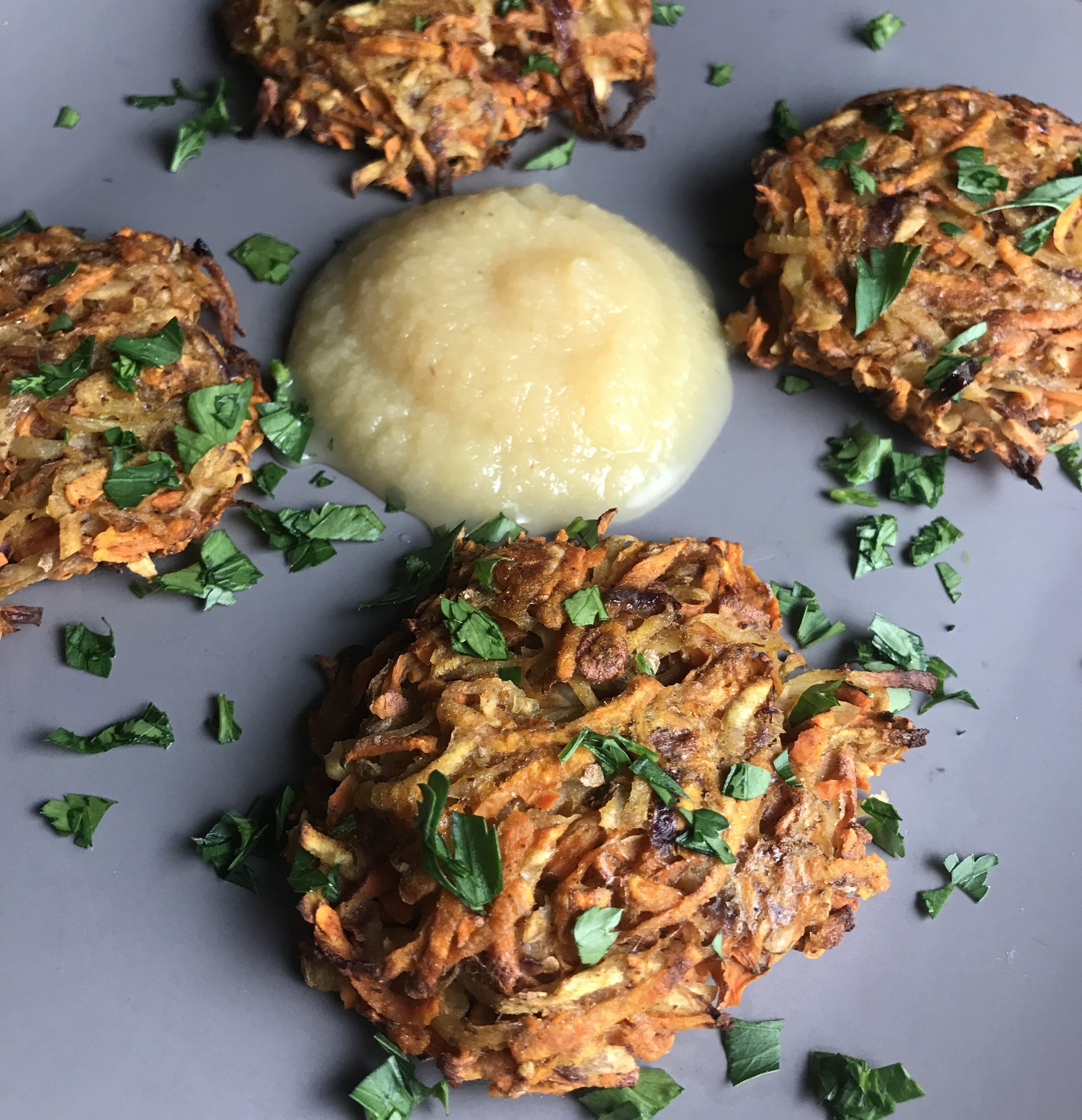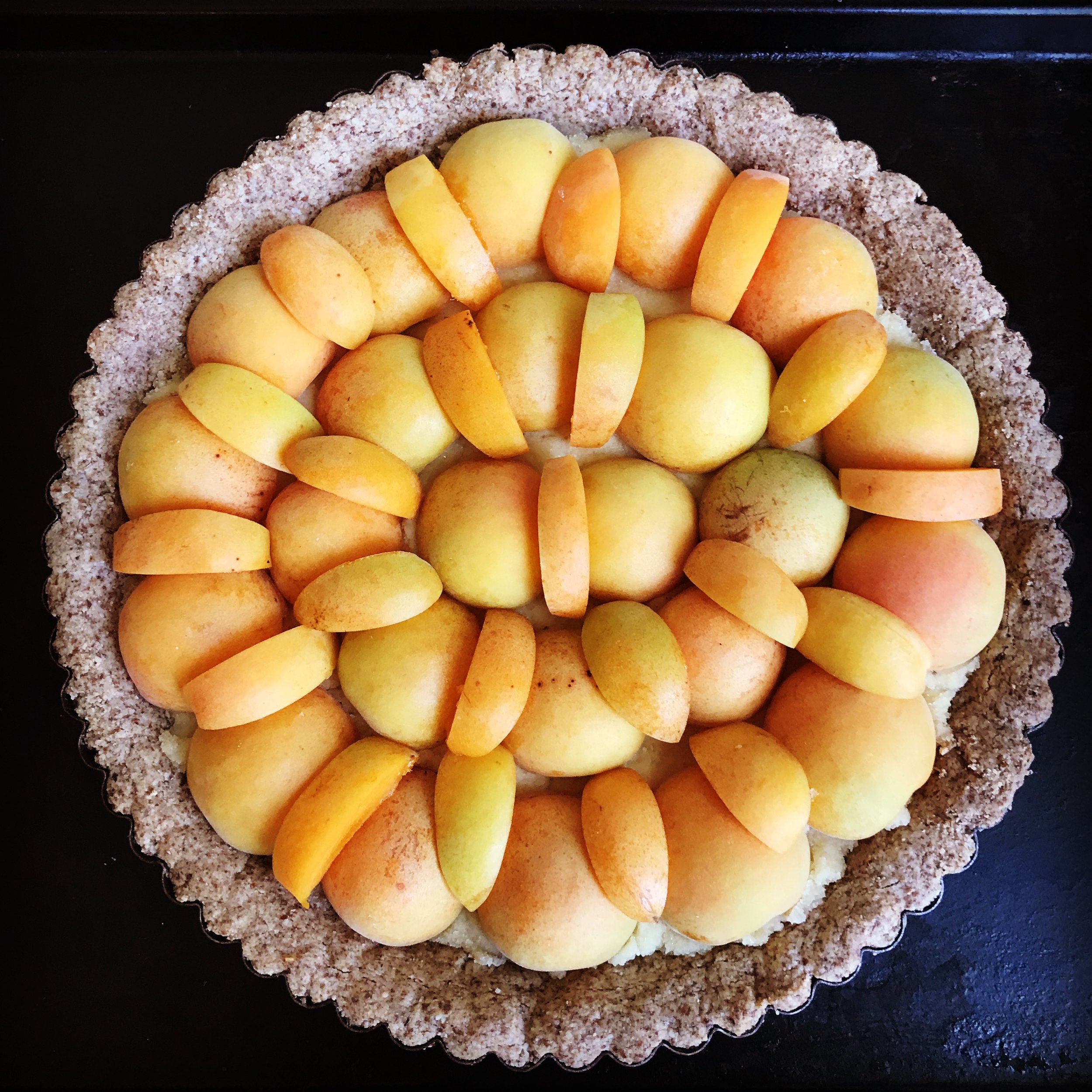I was lucky to grow up in Texas (one of the only times you may ever hear me say that!) because it meant Decembers were mild enough that we could cook our latkes outdoors. My mom had an electric griddle that she would schlep to the back patio, where she would assemble a makeshift latke-frying station, and save our family from smelling like frying grease for the next week. Today, I am still keen to avoid the smell, but I get around this by baking my latkes in the oven. Yes, they’ll never be quite as crisp as their deep-fried brethren, but to have a house that is free of oil odors is priceless to me.
From an Ayurvedic perspective, baked latkes are easier to digest since they’re less oil-laden, and I add in a touch of cinnamon to aid digestion as well. I call for Ceylon cinnamon, as it’s gentle, sweet taste best complements the earthy root veggies, but you can certainly use regular spicy cinnamon as well, or omit it altogether. You’re also welcome to stick to 100% potato latkes, but I find using a mix of roots veggies always yields a more flavorful (and beautiful) experience. I also like to use red onion for its color, but white does the trick too! Choose organic root vegetables as we’ll be keeping the skins on. If you choose to use conventional produce, I would recommend peeling all vegetables before using (for this recipe and anything else).
Prep time: 10m | Cook time: 25m | Makes about 18 latkes
Ingredients:
1½ Tablespoons ground flax seed
2 pounds assorted root vegetables (I use sweet potato, parsnip and potato)
1 medium red onion
3 Tablespoons chickpea flour (besan)
1 teaspoon baking powder
1 teaspoon Ceylon cinnamon (optional)
1 teaspoon salt
Melted ghee or neutral cooking oil (about 1/4 cup)
Applesauce and/or sour cream or cashew sour cream for serving
Preparation:
Mix ground flax seed with 4 Tablespoons of water in a small bowl. Put in the refrigerator to chill.
Pre-heat oven to 425 degrees. Line 2 large baking sheets with parchment paper or reusable silicone mats, and brush well with melted ghee or oil. Be generous as the oil is going to help crisp your latkes when it comes time to bake them.
Wash all your root vegetables very well and dry completely with a towel. Shred your roots in a food processor or grate by hand (there is an eternal debate about which method is better…I am a food processor girl myself). Line a third large baking tray with a clean kitchen towel or a couple layers of paper towel and spread the shredded roots into an even layer. Top with another towel or a couple additional layers of paper towels. Top with a final baking tray, and place some heavy pans on top to help squeeze out the liquid (if you’ve run out of trays, you can also carefully put the weighted items directly on top).
Shred or grate the onion and then transfer to a mesh sieve. Use a silicone spatula or back of a large spoon to expel any excess liquid, and then transfer to a large bowl. After the roots have sat for about 10 minutes, add them to the bowl with the onion and stir well with your hands.
Mix together chickpea flour, baking powder, cinnamon and salt in a small bowl, and then sprinkle it over the vegetable mixture. Use your hands to integrate the flour mixture into the vegetables. Add the soaked ground flax seed, and mix well once more.
Use your hands to shape the latkes (about 1/4 cup each), spacing them about an inch apart on the prepared baking sheets as each is ready. Once all latkes have been formed, brush the tops with a generous coating of ghee or oil. Bake for 12 minutes, then remove from the oven and flip each latke carefully (I use 2 spatulas for greatest ease). Return latkes to the oven (if you are using two different racks in the oven, be sure to rotate whichever tray was initially above to the bottom), and bake an additional 10–12 minutes, or until latkes are golden brown and crisp on the outside.
Serve latkes immediately, accompanied by applesauce and/or sour cream. Leftover latkes can be re-crisped in a toaster oven.




